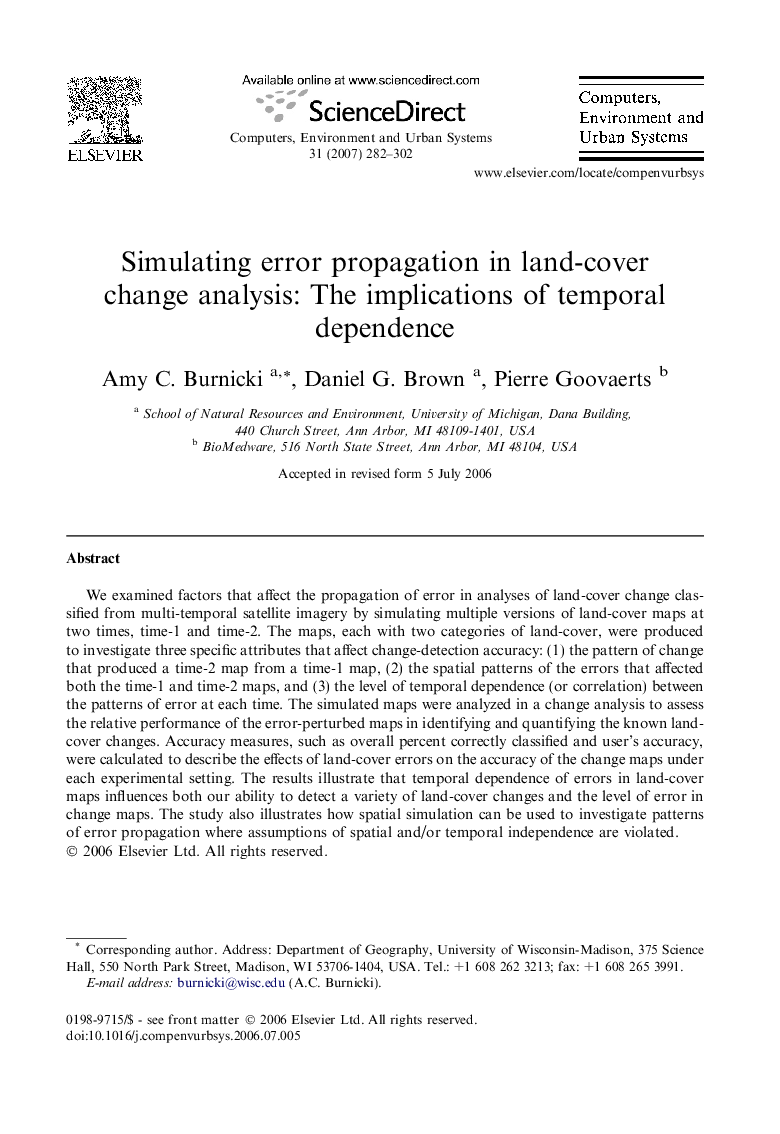| Article ID | Journal | Published Year | Pages | File Type |
|---|---|---|---|---|
| 506540 | Computers, Environment and Urban Systems | 2007 | 21 Pages |
We examined factors that affect the propagation of error in analyses of land-cover change classified from multi-temporal satellite imagery by simulating multiple versions of land-cover maps at two times, time-1 and time-2. The maps, each with two categories of land-cover, were produced to investigate three specific attributes that affect change-detection accuracy: (1) the pattern of change that produced a time-2 map from a time-1 map, (2) the spatial patterns of the errors that affected both the time-1 and time-2 maps, and (3) the level of temporal dependence (or correlation) between the patterns of error at each time. The simulated maps were analyzed in a change analysis to assess the relative performance of the error-perturbed maps in identifying and quantifying the known land-cover changes. Accuracy measures, such as overall percent correctly classified and user’s accuracy, were calculated to describe the effects of land-cover errors on the accuracy of the change maps under each experimental setting. The results illustrate that temporal dependence of errors in land-cover maps influences both our ability to detect a variety of land-cover changes and the level of error in change maps. The study also illustrates how spatial simulation can be used to investigate patterns of error propagation where assumptions of spatial and/or temporal independence are violated.
